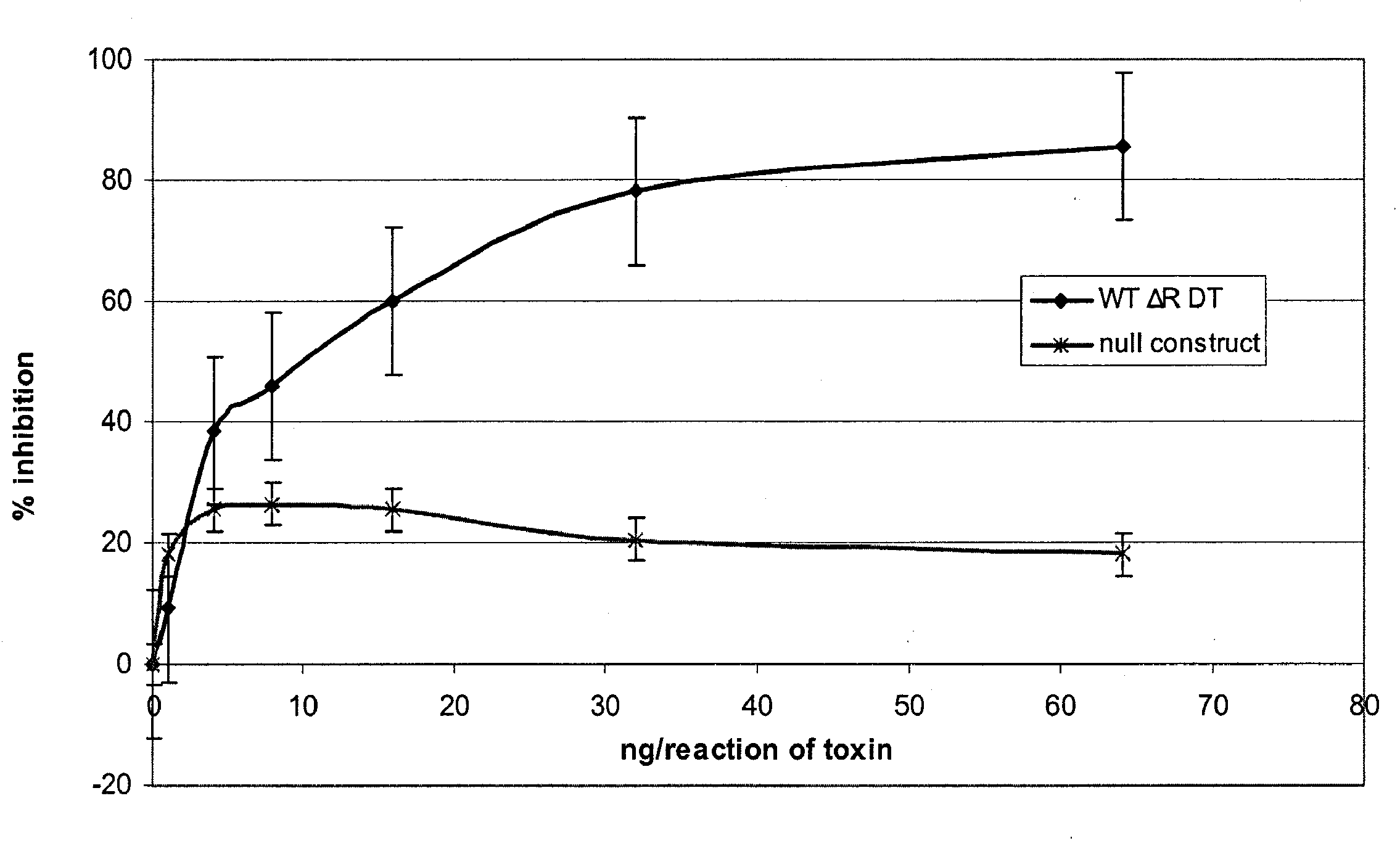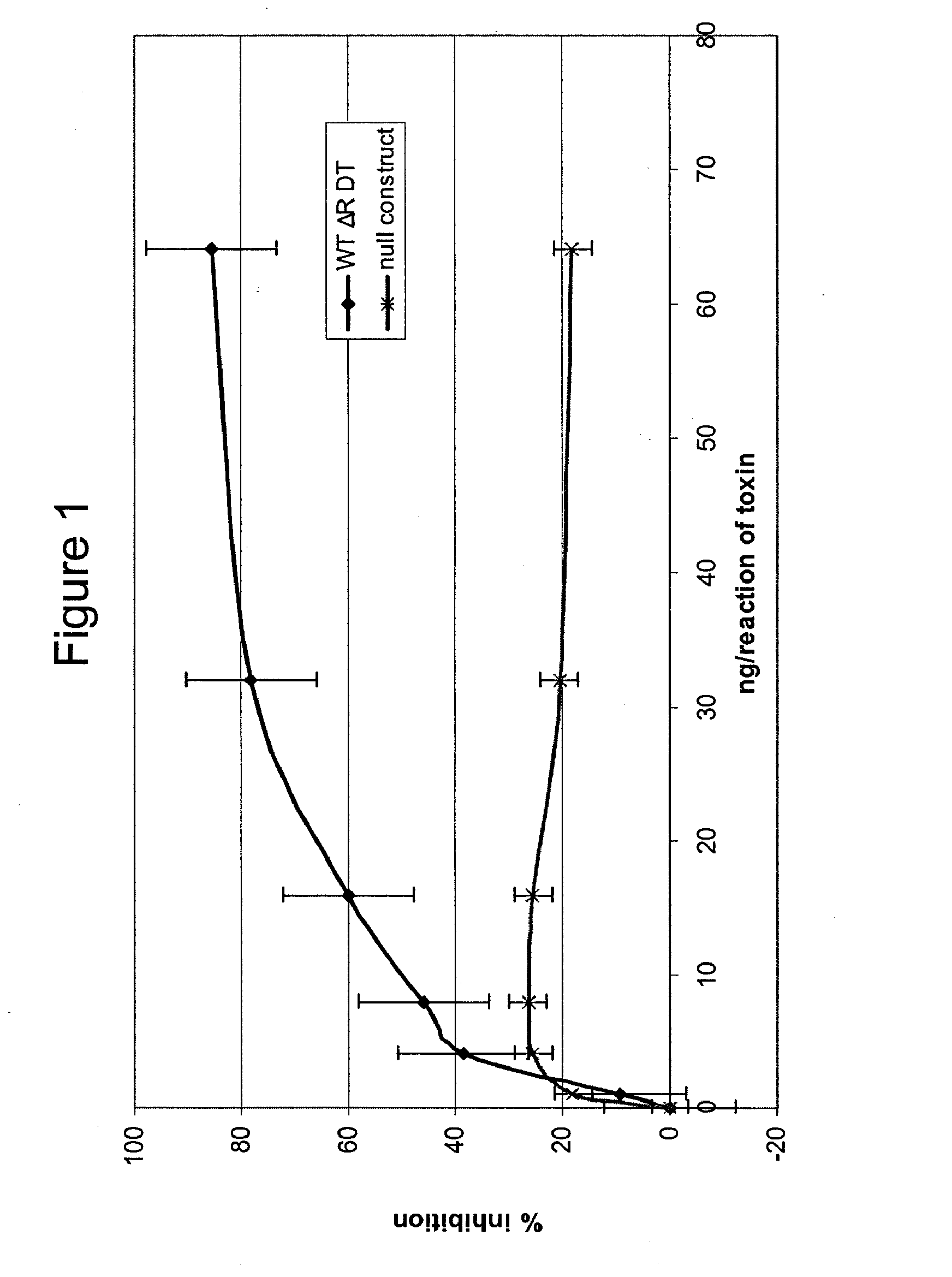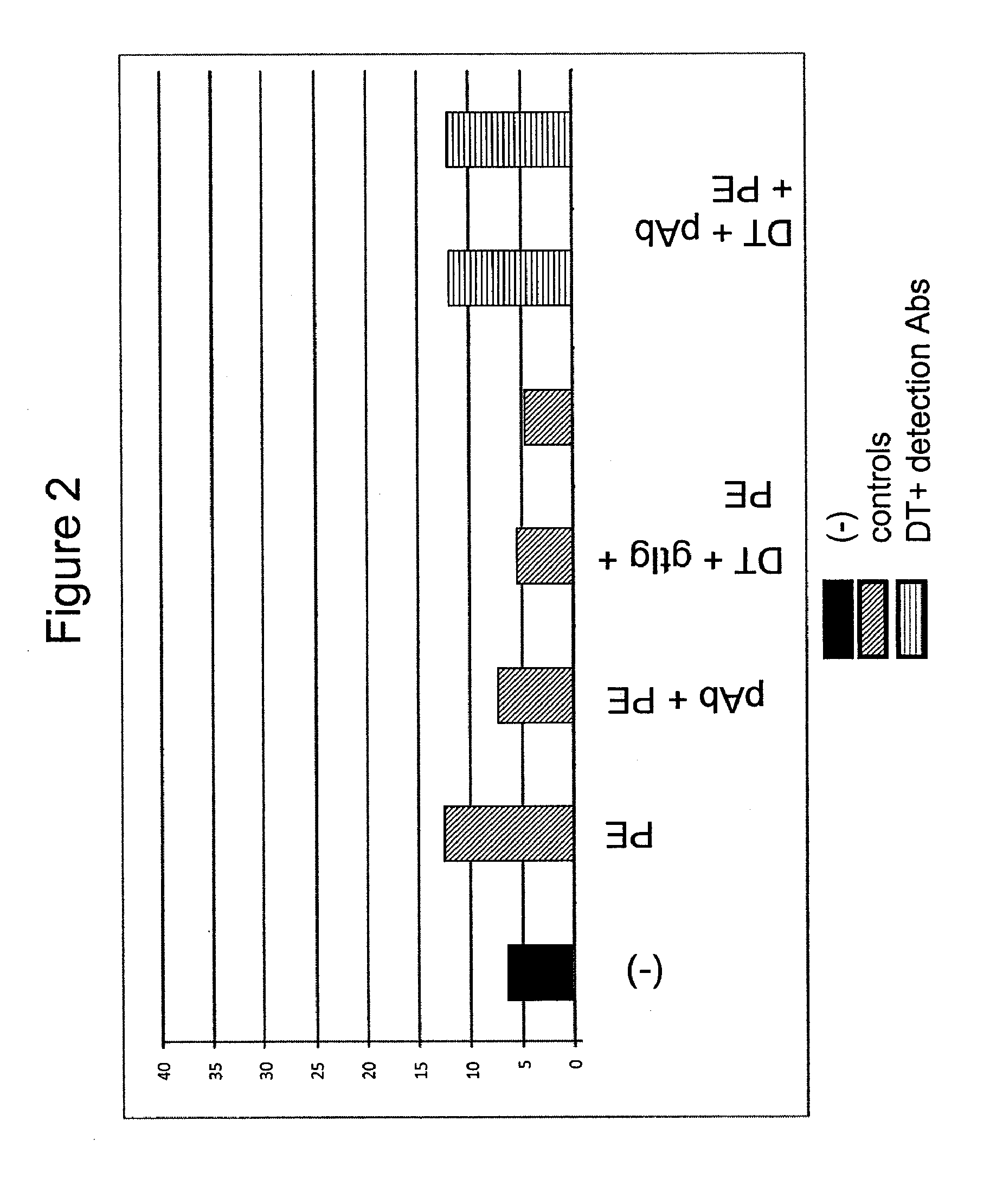Modified diphtheria toxins
- Summary
- Abstract
- Description
- Claims
- Application Information
AI Technical Summary
Benefits of technology
Problems solved by technology
Method used
Image
Examples
example 1
Construction, Expression and Purification of DT Variant and DT-Fusion Proteins
[0262]Construction of DT Variant and DT-Fusion Proteins
[0263]A truncated DT-based toxophore comprising a methionine residue at the N-terminus and amino acid residues 1 through 386 (SEQ ID NO: 2) of the native DT (now residues 2-387 in the truncated toxophore) is constructed as DT387 or residues 1-382 of DT387. The DT-based toxophore can also comprise a methionine residue at the N-terminus, amino acid residues 1 through 386 (SEQ ID NO: 2) of the native DT (now residues 2-387 in the truncated toxophore), and residues 484-485 of native DT, constructed as DT389. DT387 and DT389 contains three (x)D(y) motifs at residues 7-9 (VDS), residues 29-31 (VDS), and residues 290-292 (IDS). DT382 contains residues 1-382 of DT387 or DT389. Other C-terminal truncated DT constructs as described herein can be used in the assays provided herein for testing functionality of DT variants. One would understand that modifications m...
example 2
Cell Permeabilization Assays
[0270]Human vascular endothelial cells are maintained in EGM media (obtained from Cambrex, Walkersville, Md.). Sub-confluent early passage cells are seeded at equivalent cell counts onto plastic cover slips. Purified, endotoxin free wild type DT toxophore and mutants are labeled with the fluorescent tag F-150 (Molecular Probes, Eugene, Oreg.) through chemical conjugation. HUVECs are incubated with equivalent amounts of the labeled toxophores. The media is then aspirated, and the cells are then washed, fixed and prepared for analysis. Examination of the cells on cover slips from different treatment groups permits the analysis of the number of cells labeled by the fluorescent toxophore. No targeting ligand is present on the toxophore and, consequently, the level of HUVEC interaction is proportional only to the toxophores affinity for HUVECs. Comparisons are carried out using a fluorescent microscope and comparing the number of cells labeled from at least te...
example 3
[0274]This example describes a method for testing ADP-Ribosyltransferase Activity. Ribosome inactivating protein toxins, such as diphtheria toxin, catalyze the covalent modification of translation elongation factor 2 (EF-2). Ribosylation of a modified histidine residue in EF-2 halts protein synthesis at the ribosome and results in cell death. Ribosyltransferase assays to determine catalytic activity of the DT387 mutants are performed in 50 mM Tris-Cl, pH8.0, 25 mM EDTA, 20 mM Dithiothreitol, 0.4 mg / ml purified EF-2, and 1.0 μM [32P]-NAD+(10 mCi / ml, 1000 Ci / mmol, Amersham-Pharmacia). The purified mutant proteins are tested in a final reaction volume of 40 μl. The reactions are performed in 96 well, V-bottom microtiter plates (Linbro) and incubated at room temperature for an hour. Proteins are precipitated by addition of 200 μl 10% TCA and collected on glass fiber filters, and radioactivity is determined by standard protocols. Traditional methods for measuring ADP-ribosylation use per...
PUM
 Login to View More
Login to View More Abstract
Description
Claims
Application Information
 Login to View More
Login to View More - R&D
- Intellectual Property
- Life Sciences
- Materials
- Tech Scout
- Unparalleled Data Quality
- Higher Quality Content
- 60% Fewer Hallucinations
Browse by: Latest US Patents, China's latest patents, Technical Efficacy Thesaurus, Application Domain, Technology Topic, Popular Technical Reports.
© 2025 PatSnap. All rights reserved.Legal|Privacy policy|Modern Slavery Act Transparency Statement|Sitemap|About US| Contact US: help@patsnap.com



